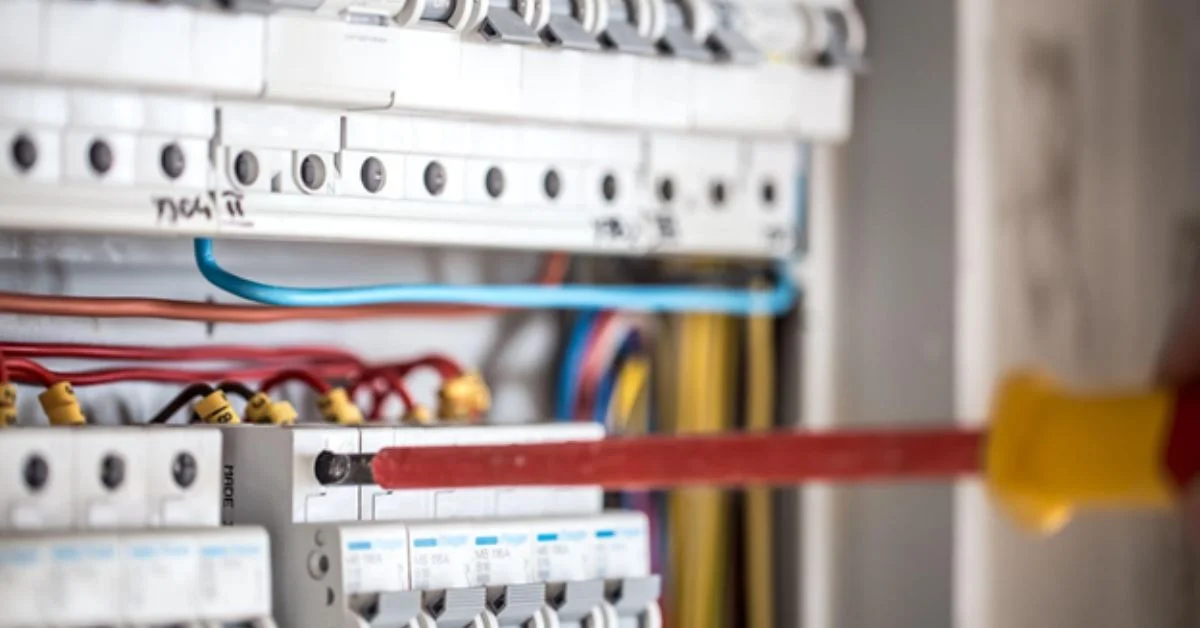When it comes to the safety and efficiency of your home’s electrical system, few things are as important as the electrical panel. This crucial component of your electrical setup ensures that the flow of electricity is managed correctly and safely throughout your home. If you’re in Sacramento and considering replacing your electrical panel, it’s essential to understand the process, benefits, and factors that could influence your decision. In this article, we’ll dive into the specifics of electrical panel replacement, including why it’s necessary, how to know when it’s time for an upgrade, and what you can expect from the process.
Why Electrical Panel Replacement is Important
Your electrical panel is essentially the brain of your electrical system. It controls the distribution of power to various circuits throughout your home. Over time, electrical panels can become outdated, worn, or even unsafe, leading to a host of potential issues such as power outages, electrical fires, or even complete system failure.
An outdated or faulty electrical panel can be a significant hazard, as it may not be able to handle the increased load from modern appliances and devices. In Sacramento, where weather conditions can lead to higher energy consumption, ensuring that your electrical panel is up to the task is more important than ever.
Signs It’s Time for an Electrical Panel Replacement
There are several signs that indicate your electrical panel may need to be replaced. If you notice any of the following symptoms, it’s time to consider an upgrade:
Frequent Breaker Trips
One of the most common signs of an aging or faulty electrical panel is the frequent tripping of circuit breakers. While a tripped breaker can occur as a result of overloading a circuit, frequent trips may signal that your electrical panel is unable to handle the load. This can be dangerous, as it may indicate that the system is struggling to distribute power effectively.
Flickering Lights
If your lights flicker or dim regularly, especially when using multiple appliances at once, this could be another indication of an overloaded or malfunctioning electrical panel. A well-functioning panel should ensure that electricity flows smoothly to all areas of the home without disruptions.
Burning Smell or Discoloration
If you notice a burning smell near your electrical panel or see scorch marks or discoloration on the panel itself, this is a serious sign of overheating or electrical failure. This can lead to electrical fires, so it’s critical to address the issue immediately by replacing the panel.
Outdated Panel Type
Some older electrical panels, such as those made by certain manufacturers like Zinsco or Federal Pacific, are known to have inherent safety issues. If your home has one of these outdated models, replacing it with a modern, safer panel should be a priority.
Increased Energy Demands
With the rise of energy-hungry devices and appliances like air conditioners, electric vehicles, and home office equipment, many homes now require more power than they did in the past. If your electrical panel is older, it may not be able to support the increased energy demands of your modern lifestyle. Upgrading to a higher-capacity panel can ensure that your electrical system remains stable and safe.
Choosing the Right Electrical Panel for Your Home
When replacing your electrical panel, it’s crucial to select the right type for your home’s specific needs. There are several factors to consider in making this decision:
Amperage
The amperage of an electrical panel refers to the maximum amount of electricity it can handle at once. Most modern homes require a 200-amp panel, especially if they have high-energy demands. If your current panel is only rated for 100 amps, upgrading to a 200-amp panel can provide the extra capacity needed for newer appliances and devices.
Subpanels
In some cases, a single electrical panel may not be sufficient to handle the needs of a large home or one with multiple floors. In such cases, you may need to install additional subpanels. These subpanels are connected to the main panel and distribute power to different areas of the home.
Brand and Quality
Not all electrical panels are created equal. It’s important to choose a reputable brand with a history of producing high-quality, reliable panels. Your electrician will be able to recommend the best options based on your specific needs and budget.

The Electrical Panel Replacement Process
Replacing an electrical panel is not a do-it-yourself job. It requires a licensed electrician with experience in handling electrical systems. Here’s an overview of the typical process involved in replacing your electrical panel:
Initial Assessment
Before beginning the replacement, your electrician will perform a thorough assessment of your current electrical system. They’ll inspect the panel, circuit breakers, and wiring to determine the extent of the upgrade needed. If any issues are discovered, such as outdated wiring or faulty connections, these will be addressed during the replacement process.
Choosing the Right Panel
Once the assessment is complete, your electrician will help you choose the best electrical panel for your home. Factors such as amperage, subpanels, and space requirements will all play a role in the selection process.
Permits and Codes
Electrical panel replacement typically requires permits from your local government. In Sacramento, your electrician will handle the necessary paperwork and ensure that the work complies with local building codes and regulations. This ensures that your new panel is installed safely and meets all legal requirements.
Installation
The installation process involves disconnecting the power supply, removing the old panel, and installing the new one. This process can take several hours, depending on the complexity of the installation and any additional work required, such as upgrading wiring or adding subpanels.
Testing and Inspection
Once the new panel is installed, the electrician will test the system to ensure everything is working properly. This includes checking for any electrical issues, such as short circuits or improper grounding. After testing, the panel will be inspected by local authorities to verify that it meets all safety standards.
Cost of Electrical Panel Replacement in Sacramento
The cost of replacing an electrical panel can vary widely depending on several factors, including the size of the panel, the complexity of the installation, and any additional work required. On average, homeowners in Sacramento can expect to pay between $1,500 and $3,000 for a full electrical panel replacement. However, the cost could be higher if additional upgrades or repairs are needed.
To get an accurate estimate for your electrical panel replacement, it’s best to consult with a licensed electrician who can assess your home’s specific needs.

Electrical Panel Replacement FAQs
How long does an electrical panel replacement take?
On average, the installation of a new electrical panel can take anywhere from 4 to 8 hours, depending on the complexity of the installation and the work required. This can vary based on factors such as the size of the panel, the condition of your existing wiring, and whether additional work like subpanels is necessary.
Can I replace my electrical panel myself?
It is highly recommended that you hire a licensed electrician for electrical panel replacement. Handling electrical components without proper training can be dangerous and may result in injury, fire hazards, or code violations. A professional will ensure the job is done safely and correctly.
What are the signs of an overloaded electrical panel?
Some signs of an overloaded electrical panel include frequent breaker trips, flickering lights, and a burning smell. If your panel is unable to handle the electrical load, it can become a fire hazard. If you experience any of these issues, contact a licensed electrician immediately.
How often should I replace my electrical panel?
Electrical panels can last for many years, but they should be replaced if they are outdated, damaged, or unable to handle the electrical load required by modern appliances. If your home was built in the 1960s or earlier, it’s worth having your panel inspected to determine if an upgrade is necessary.
What type of panel is best for a residential home?
The best type of electrical panel for your home depends on your specific needs, including the size of your home, the number of electrical appliances, and future energy demands. A 200-amp panel is typically sufficient for most homes, but larger homes with more electrical needs may require a higher capacity panel.
Conclusion
Electrical panel replacement is a critical task that ensures the safety and efficiency of your home’s electrical system. Whether you’re experiencing frequent breaker trips, flickering lights, or simply need to upgrade your outdated panel, it’s essential to work with a licensed electrician to ensure the job is done right. Replacing your electrical panel not only improves the safety of your home but also ensures that your electrical system can handle the demands of modern living.
If you’re in Sacramento and considering an electrical panel replacement, make sure to consult with a licensed electrician who can assess your needs and guide you through the process. By upgrading your panel, you’ll be investing in the long-term safety and reliability of your home’s electrical system.
For more information,click here.









